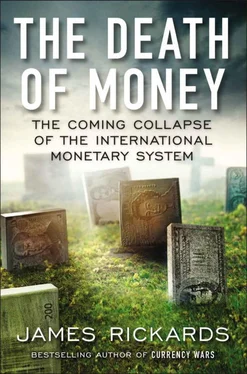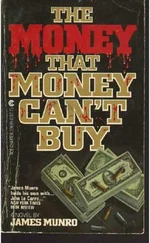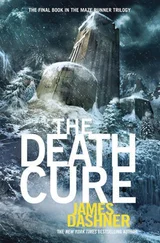Danger comes from within and without. We have a misplaced confidence that central banks can save the day; in fact, they are ruining our markets. The value-at-risk models used by Wall Street and regulators to measure the dangers that derivatives pose are risible; they mask overleveraging, which is shamelessly transformed into grotesque compensation that is throwing our society out of balance. When the hidden costs come home to roost and taxpayers are once again stuck with the bill, the bankers will be comfortably ensconced inside their mansions and aboard their yachts. The titans will explain to credulous reporters and bought-off politicians that the new collapse was nothing they could have foreseen.
While we refuse to face truths about debts and deficits, dozens of countries all over the globe are putting pressure on the dollar. We think the gold standard is a historical relic, but there’s a contemporary scramble for gold around the world, and it may signify a move to return to the gold standard. We greatly underestimate the dangers from a cyberfinancial attack and the risks of a financial world war.
Regression analysis and correlations, so beloved by finance quants and economists, are ineffective for navigating the risks ahead. These analyses assume that the future resembles the past to an extent. History is a great teacher, but the quants’ suppositions contain fatal flaws. The first is that in looking back, they do not look far enough. Most data used on Wall Street extend ten, twenty, or thirty years into the past. The more diligent analysts will use hundred-year data series, finding suitable substitutes for instruments that did not exist that far back. But the two greatest civilizational collapses in history, the Bronze Age collapse and the fall of the Roman Empire, occurred sixteen hundred years apart, and the latter was sixteen hundred years ago. This is not to suggest civilization’s imminent collapse, merely to point out the severely limited perspective offered by most regressions. The other flaw involves the quants’ failures to understand scaling dynamics that place certain risk measurements outside history. Since potential risk is an exponential function of system scale, and since the scale of financial systems measured by derivatives is unprecedented, it follows that the risk too is unprecedented.
While the word collapse as applied to the dollar sounds apocalyptic, it has an entirely pragmatic meaning. Collapse is simply the loss of confidence by citizens and central banks in the future purchasing power of the dollar. The result is that holders dump dollars, either through faster spending or through the purchase of hard assets. This rapid behavioral shift leads initially to higher interest rates, higher inflation, and the destruction of capital formation. The end result can be deflation (reminiscent of the 1930s) or inflation (reminiscent of the 1970s), or both.
The coming collapse of the dollar and the international monetary system is entirely foreseeable. This is not a provocative conclusion. The international monetary system has collapsed three times in the past century—in 1914, 1939, and 1971. Each collapse was followed by a tumultuous period. The 1914 collapse was precipitated by the First World War and was followed later by alternating episodes of hyperinflation and depression from 1919 to 1922 before regaining stability in the mid-1920s, albeit with a highly flawed gold standard that contributed to a new collapse in the 1930s. The Second World War caused the 1939 collapse, and stability was restored only with the Bretton Woods system, created in 1944. The 1971 collapse was precipitated by Nixon’s abandonment of gold convertibility for the dollar, although this dénouement had been years in the making, and it was followed by confusion, culminating in the near dollar collapse in 1978.
The coming collapse, like those before, may involve war, gold, or chaos, or it could involve all three. This book limns the most imminent threats to the dollar, likely to play out in the next few years, which are financial warfare, deflation, hyperinflation, and market collapse. Only nations and individuals who make provision today will survive the maelstrom to come.
In place of fallacious, if popular, methods, this book considers complexity theory to be the best lens for viewing present risks and likely outcomes. Capital markets are complex systems nonpareil. Complexity theory is relatively new in the history of science, but in its sixty years it has been extensively applied to weather, earthquakes, social networks, and other densely connected systems. The application of complexity theory to capital markets is still in its infancy, but it has already yielded insights into risk metrics and price dynamics that possess greater predictive power than conventional methods.
As you will see in the pages that follow, the next financial collapse will resemble nothing in history. But a more clear-eyed view of opaque financial happenings in our world can help investors think through the best strategies. In this book’s conclusion you will find some recommendations, but deciding upon the best course to follow will require comprehending a minefield of risks, while poised at a crossroads, pondering the death of the dollar.
Beyond mere market outcomes, consider financial war.
Are we prepared to fight a financial war? The conduct of financial war is distinct from normal economic competition among nations because it involves intentional malicious acts rather than solely competitive ones. Financial war entails the use of derivatives and the penetration of exchanges to cause havoc, incite panic, and ultimately disable an enemy’s economy. Financial war goes well beyond industrial espionage, which has existed at least since the early 1800s, when an American, Francis Cabot Lowell, memorized the design for the English power loom and recreated one in the United States.
The modern financial war arsenal includes covert hedge funds and cyberattacks that can compromise order-entry systems to mimic a flood of sell orders on stocks like Apple, Google, and IBM. Efficient-market theorists who are skeptical of such tactics fail to fathom the irrational underbelly of markets in full flight. Financial war is not about wealth maximization but victory.
Risks of financial war in the age of dollar hegemony are novel because the United States has never had to coexist in a world where market participants did not depend on it for their national security. Even at the height of dollar flight in 1978, Germany, Japan, and the oil exporters were expected to prop up the dollar because they were utterly dependent on the United States to protect them against Soviet threats. Today powerful nations such as Russia, China, and Iran do not rely on the United States for their national security, and they may even see some benefit in an economically wounded America. Capital markets have moved decisively into the realm of strategic affairs, and Wall Street analysts and Washington policy makers, who most need to understand the implications, are only dimly aware of this new world.
Critics from Richard Cantillon in the early eighteenth century to V. I. Lenin and John Maynard Keynes in the twentieth have been unanimous in their view that inflation is the stealth destroyer of savings, capital, and economic growth.
Inflation often begins imperceptibly and gains a foothold before it is recognized. This lag in comprehension, important to central banks, is called money illusion, a phrase that refers to a perception that real wealth is being created, so that Keynesian “animal spirits” are aroused. Only later is it discovered that bankers and astute investors captured the wealth, and everyday citizens are left with devalued savings, pensions, and life insurance.
Читать дальше











